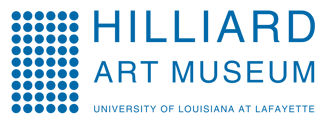Marina Zurkow: Mesocosm (Wink, TX)
May 19, 2018 — Aug 15, 2018
As part of a continuing series of exhibitions focused on historically significant film and video artists, the museum will feature Zurkow’s 2012 generative
animation Mesocosm (Wink, TX). This work comes to Lafayette from Russia, where it was recently featured in the 2017 Moscow Biennial exhibition.
This exhibition marks the first time the award-winning new media artist is shown in Louisiana. The animation Mesocosm (Wink, TX) is the first
algorithmically-driven piece exhibited at the museum, and runs live using Flash animation software. In her art, the playback choreographies are dynamic;
on-screen actions are dictated by programmed constraints run by a computer in real-time. Her character’s behaviors are not predetermined and linear,
or canned, as one might find with traditional video formats. The title Mesocosm refers to the field of environmental science, and pertains
to experimental, simulated ecosystems that allow for manipulation of the physical environment. Mesocosms are typically used for biological, community
and ecological research.
In 2011 Zurkow visited Texas for an artist residency that was supported by DiverseWorks in Houston. She ventured to the high southern plains of the Llano Estacado in West Texas, where Zurkow met with geologists, naturalists, ranchers, activists and oilmen. During the process of her exploratory field work, Zurkow located the “Wink Sink 2” on private oil company property in the small town of Wink. The site of this catastrophe appears in Mesocosm (Wink, Texas) as a natural geological event; it is completed, provocatively, with picnic rest stop furnishings.
In the animation’s foreground, a large sinkhole boils, gushes and flows. In a ghostly choreography, this vortex whirls and expels objects including plastic bags, oil and dark clouds. In the background, oil refineries burn off gases in plumes, as an occasional train cuts the horizon. Like actors called to a stage, the animals, weather and things that constitute this “mesocosm” are triggered statistically in a cycle of 146 hours, with each minute representing one hour of clock time in a calendar. By day, the landscape is inhabited by a diversity of bird life, prairie dogs, insects, pronghorn antelope, HazMat workers and—depending on the season—by migrating monarch butterflies, snakes and sandhill cranes. The landscape operates as a Pandora’s box, whose innards disgorge enchanted detritus: the new gems of an industrial sublime.
Exhibition Announcement

